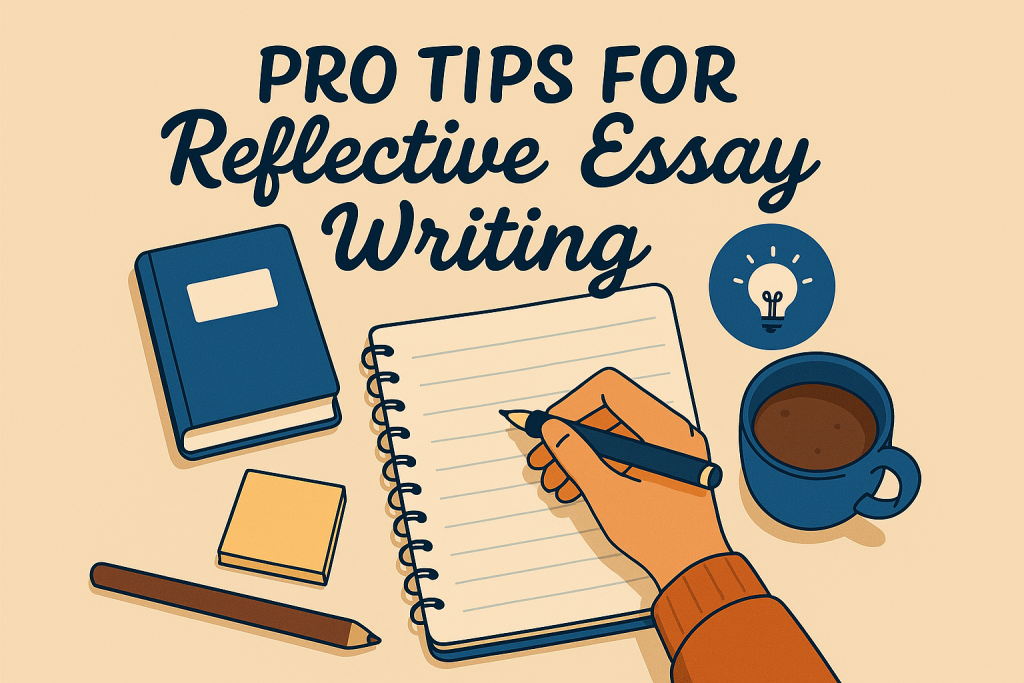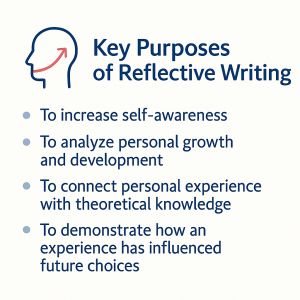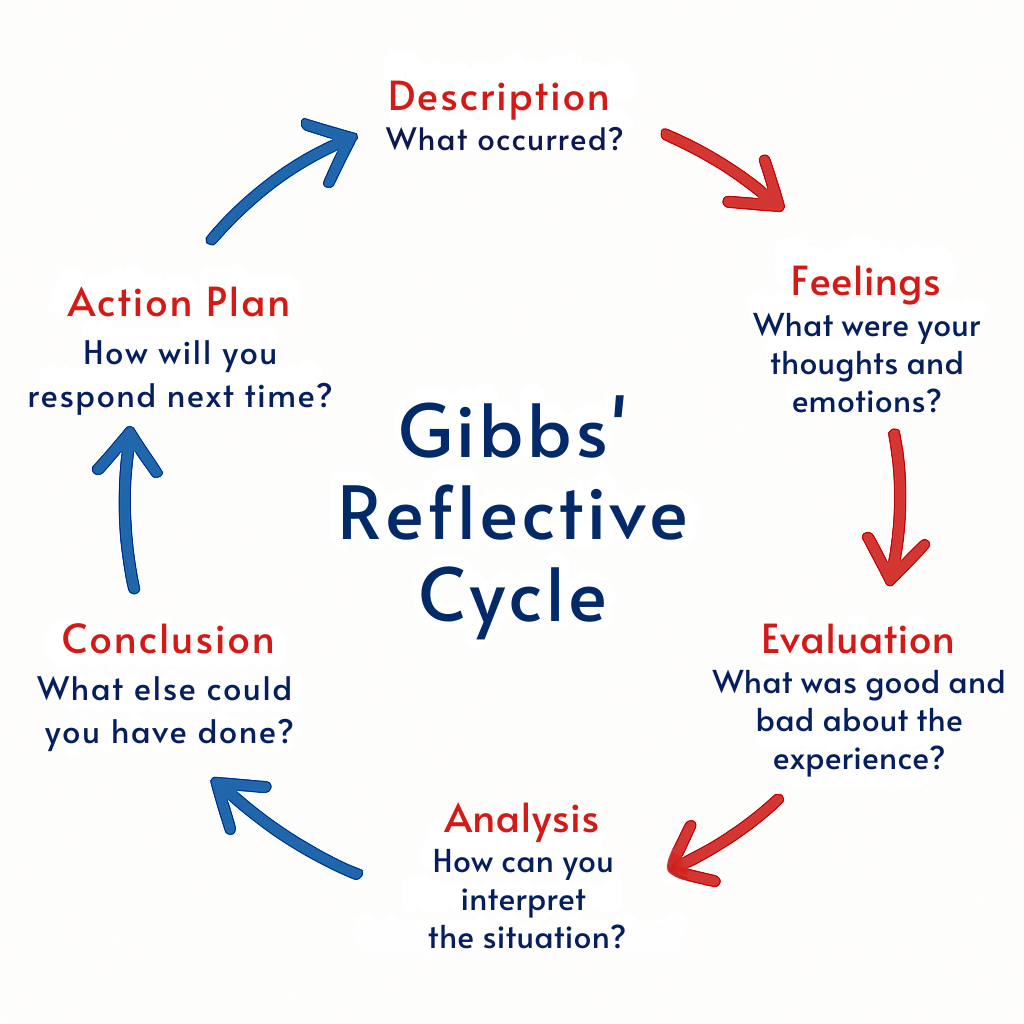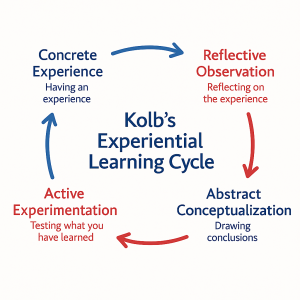Pro Tips for Reflective Essay Writing
A reflective essay is a type of writing that encourages you to think deeply about a personal experience and explore what it taught you. Unlike other essays that rely heavily on facts and analysis, reflective writing focuses on your thoughts, emotions, and the meaning behind an event. It helps you understand how a specific experience has influenced your learning, behavior, or future decisions.
This form of writing is commonly used in schools and universities, especially in fields like education, nursing, and psychology. It is also widely used in professional development to help people evaluate their growth and improve their skills through self-assessment.
In this blog, we’ll go over key strategies and essential essay writing skills that will help you write a clear and meaningful reflective essay. Many writers, including those at FineWriters, believe that Reflective Essay writing is one of the most powerful tools for personal and academic growth.

Quick Overview: Key Pro Tips for Reflective Essay Writing
| Strategy | Purpose |
| Understand the purpose | Helps avoid summary and focus on deeper reflection |
| Choose the right topic | Ensures meaningful and emotional depth |
| Use a clear structure | Improves flow and makes the essay easier to follow |
| Develop a strong introduction | Captures interest and sets the tone |
| Practice analytical reflection | Adds depth and personal growth to your writing |
| Be personal and honest | Makes your writing relatable and genuine |
| Apply reflective models | Gives structure and clarity to your thinking |
| Proofread and edit | Polishes your writing for clarity and coherence |
Before you begin writing, it’s crucial to grasp the core purpose of a reflective essay. Many writers mistakenly summarize events rather than reflect on them. While summaries describe what happened, reflection delves into why it mattered.
Key Purposes of Reflective Writing:

- To increase self-awareness
- To analyze personal growth and development
- To connect personal experience with theoretical knowledge
- To demonstrate how an experience has influenced future choices
In education, reflective writing allows instructors to evaluate how well students integrate real-life experiences with course concepts. Beyond school, it promotes self-growth and helps professionals improve by recognizing areas for development.
Choose the Right Topic to Reflect On

Selecting the right topic is one of the most important steps in writing a reflective essay. While many assume it must center around a major, life-changing event, some of the most powerful reflections come from small yet impactful moments. What matters most is that the experience meant something to you and allows for deep personal insight.
Your topic sets the tone for the entire essay, so it’s important to choose one that resonates with you and provides room for exploration. It could be a brief moment that changed your perspective, a personal challenge you overcame, or even a comment someone made that stuck with you. The key is to find an experience that offers meaningful reflection and emotional depth.
Consider these guiding questions when selecting your topic:
- What personal experience had a lasting impression on me?
- What did I learn from that experience?
- Did it challenge or change my beliefs or behaviors?
- How does it connect to a broader theme or lesson?
Also, make sure your topic fits the context of your assignment. If it’s part of a school or college task, check that your topic aligns with the subject or the objectives of the class. Choosing a relevant and thoughtful topic will not only make your essay more focused and easier to write but also ensure it genuinely reflects who you are and what you’ve learned.
How to Create a Clear Reflective Essay Structure?
Having a well-organized structure is essential when writing a reflective essay. It helps you communicate your thoughts effectively and allows your reader to follow your journey with ease. A typical reflective essay includes three main sections: introduction, body, and conclusion, with each part serving a specific purpose in guiding your reflection.
Introduction
Set the scene by briefly describing the experience or topic you’re reflecting on.
Provide enough background to help the reader understand the context—don’t go into too much detail yet.
State your focus by mentioning what specific aspect(s) of the experience your reflection will explore.
Body Paragraphs
This is the core of your essay, where you explore your thoughts and feelings in depth. There are two effective ways to organize this section:
Chronological Order: Describe the experience step-by-step, as events unfolded.
Thematic Order: Organize your reflection around key themes, such as:
- Emotions you experienced
- Challenges you faced
- Lessons you learned
- Changes in your perspective
Each paragraph should:
- Explain what happened (describe specific moments).
- Reflect on your feelings during the experience.
- Discuss what you learned and how it contributed to your growth.
- Analyze the impact the experience had on you and your current mindset or behavior.
💡 If you’re unsure how to start or feel stuck during the outlining phase, an Essay writing service can help you map out your essay or even provide a custom example to learn from.
Conclusion
- Summarize your key insights and personal growth.
- Reflect on the significance of the experience—why it matters to you now.
- Keep it personal and meaningful, tying everything back to your initial focus.
Use Smooth Transitions
- Use transition words and phrases to connect your ideas clearly between and within paragraphs.
- Smooth transitions help your essay flow naturally and keep your message coherent from beginning to end.
Develop a Strong Introduction
The introduction of a reflective essay is your chance to grab the reader’s attention and set the tone for what’s coming. Start with something interesting—a question, a short story, or a thought-provoking statement. This will hook the reader right away.
After that, give a little background about the experience you’ll be reflecting on. Don’t go into too much detail yet—just enough to give context. Then, add a clear thesis statement that explains what you’ve learned or how the experience changed you.
A strong intro in Reflective Essay writing helps readers know what to expect and makes your essay writing feel more focused.
Dive Deep with Analytical Reflection
One of the biggest mistakes people make in reflective essays is staying at the surface level. Just saying what happened isn’t enough. Good reflective writing means digging deeper—asking yourself why things happened the way they did and how they affected you. This is where analytical reflection comes in.
Instead of simply writing, “I felt nervous during the presentation,” ask yourself why you felt that way. Was it lack of preparation? Fear of public speaking? Then go even further—how did that moment help you grow? Maybe it made you realize the value of practicing or helped you learn how to manage anxiety.
Critical reflective writing pushes you to connect your experience with what you’ve learned. It’s not just about telling a story—it’s about showing how the experience changed your perspective or behavior. This type of essay analysis shows depth and maturity in your writing.
So next time you reflect, don’t just write about what happened. Think about what it meant. That’s the heart of strong Reflective Essay writing—being honest with yourself and using your thoughts to understand the bigger picture.
Use a Personal and Honest Tone
Reflective essays are meant to be personal, so don’t be afraid to write in the first person. Using “I” is completely fine—in fact, it’s expected. This makes your essay writing feel more genuine and easier to connect with.
What really matters is honesty. Readers can tell when you’re being real. At the same time, keep your tone balanced. You can express feelings, but stay respectful and focused. The right personal reflection tone feels natural and thoughtful, not too emotional or too dry.
Being yourself in your Reflective Essay writing is what makes it powerful—and helps your message truly stick.
Apply Reflective Models Where Needed
Reflective models help structure your thinking, especially in educational settings.
Two common reflective models:
- Gibbs’ Reflective Cycle:

- Kolb’s Learning Cycle

Focuses on learning through doing, reflecting, thinking, and applying
When to use them:
- If your instructor requires it
- If you need help organizing your thoughts
- To ensure your reflection includes all necessary elements
These frameworks help transform your thoughts into a more structured and academic reflection. You can also explore additional support from an Essay writing service to guide you through using these models effectively.
Proofread and Edit for Clarity
Once you’ve written your reflective essay, take the time to go back
and review it. Essay proofreading is important because even small mistakes can
make your writing confusing or less professional.
Look out for common issues like repeating the same ideas, unclear sentences, or
grammar mistakes. Make sure your reflective writing flows smoothly from one
point to the next. This helps your thoughts feel more connected and easier to
follow.
Editing reflective essays isn’t just about fixing errors—it’s also about making sure your ideas are clear and your message is strong. A clean, well-edited essay always makes a better impression. If needed, you can use an Essay writing service such as FineWriters to help with the final touches or provide a second pair of eyes for improvement.
Whether you’re writing for personal development, a class assignment, or professional growth, mastering the art of reflection takes time and practice. Don’t hesitate to seek feedback, revise thoughtfully, and refine your work. Reflective writing is not just about telling your story—it’s about understanding it.
